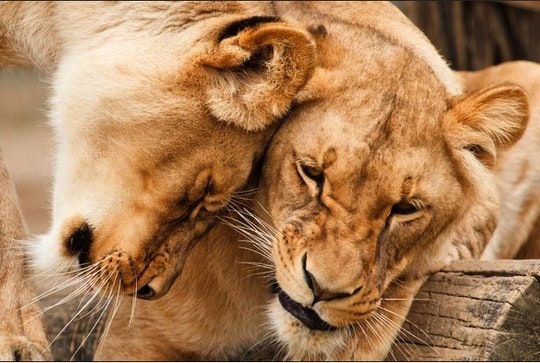If you picture a safari, chances are you’re imagining khaki outfits, with boots, binoculars and those funny hats that look like they were modeled on World War Two helmets (known as pith helmets for those interested). You’ll most likely also picture large herds or packs of lions, zebra’s, elephants and co. coming to meet you, as you brave this “dangerous” turf.
If you’re a first time safari goer (or a newbie), chances are you’ll receive a folder full of information on what to do – and not do – from your guide before you head out into the unknown.
Here’s a condensed version of don’ts if you’re considering going on a safari:
- Safari sojourners are almost always pictured in neutral clothing (so you can’t tell how dirty their clothes really are!). As clichéd as it is, neutral’s blend in with the scenery, and will help you avoid heat stroke, as darker colours attract heat. Wearing red, white or luminous yellow means you’ll be seen several kilometers away – especially in other people’s photo’s which is rather inconsiderate of you. You might also alarm or distress the animals. Check out our tips on what to pack for your South African safari.
- Don’t make loud noises or try and mimic animal calls – you look silly and aren’t fooling anyone – or anything – out there. Also, Simba may find and eat you, as payback for disturbing his nap.
- If you spot animals, approach slowly, and don’t chase after them if they back away into the veld.
- Respect your guides, they know what they’re doing and will always act in your best interest while they follow their strict regulations. Don’t try to coerce them into doing something they’re uncomfortable with. They do what they’re doing because they love it – and they don’t need some clever clogs trying to tell them how they should be doing their job (unless they’re encouraging kids to stick their heads into the lions mouth, in which case, please intervene).
- Don’t smoke while out and about – unless you are in a designated smoking area. Even one misplaced coal from your small cigarette could cause irreparable harm to the natural flora (and cause you to be haunted by that forest fire scene from Bambi, forever).
- Picture a museum … now picture leaving paper wrappers, empty cooldrink cans, and half-eaten food on a display case housing a priceless artifact … you see where I’m going with this. Don’t litter or leave behind your mess, it’s disrespectful and just not cool (plus, you’ll likely end up having some small critter choke to death on your rubbish).
- If you’re a 4×4 lover, or an avid off-roader – now is not the time to test your vehicles metal – you could wind up lost in a reserve if you attempt this – or unluckily find yourself in the midst of a rather surprised hippo family. And no, they’re not as friendly as “Chomp” would have you believe.
- Photo’s are a great way to keep the memories you’ve made – however your flash is the difference as to whether you’ll get to take those pictures. Bright bursts of light, especially at night are not natural (unless you’ve figured out how to harness a Will-o’-the-wisp). Be respectful, you wouldn’t want to wake up with a flashlight shining in your eyes, so don’t do it to the wildlife around you. Simple.
- Dont wander around by yourself after dark. Most accommodations will have an enclosed area or a protective fence around base camp – and for good reason. If you do end up lurking alone in the bushes, don’t be surprised if you find yourself reliving the “Lost World” and end up being the first ‘character’ getting munched.
- As cute and cuddly as some of the park inhabitants might be, do not feed them. Fast forward ten years and we’ll be living in the world of “Planet of the Apes” – all because you had to show them we’ve got MSG laden treats that they couldn’t stop thinking of. In retribution, we will find and hurt you.
Now that we’ve covered what not to do while on safari, here’s a much shorter list of things you can do (although I’m sure there are a variety of options available at the various game reserves, national parks and so forth):
- Have fun! A safari is one of those, once-in-a-lifetime experiences, where you’ll be close to all kinds of animals. Enjoy the magic of it, and stop worrying about everything else.
- A planned itinerary for your safari is a given. Some people love this, others would prefer to be more carefree and flexible – prefering to think about doing a walk in the morning, a drive in the afternoon and the decisions for the following day’s safari, discussed around a camp fire with drinks. Most guides will allow this – and even if they don’t, it never hurts to ask
- Seeing the animals (especially the elusive Big 5), on a safari is one of it’s biggest perks, but there are generally other activities available on-site (or close by), like golf, hot air balloon tours, microlight flights, and so on.
- Take as many photo’s as you can – they’re the visual memories which will last you a life time (and they’re handy to show-off at social gatherings). If the animals are anything like the ones from the movie, “Madagascar”, you’ll have no trouble getting the shots you want (just check that those paramilitary penguins haven’t run off with your car keys).
Remember to read the information brochure that you’ll receive upon arrival. It’ll be packed with interesting information, and may include more rules for your time spent in certain area’s. If you’ve been on a safari, let us know what your highlight of the trip was, if you’re planning a safari, what area have you chosen, and what extra’s can you add? Most importantly, if you are unsure of where you’ll be staying when planning your safari, visit LekkeSlaap so you can start planning your next epic adventure!
Main image credited to Celso Flores (Flickr)
Check our our tips on what to expect on safari and planning your trip, and what NOT to do on safari.








